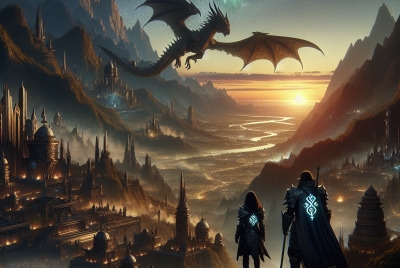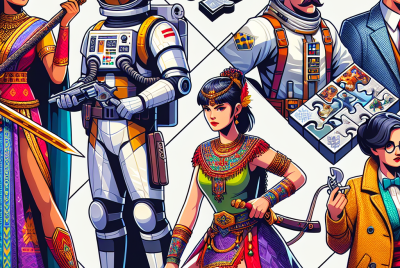Examining the Gender Representation Debate in Gaming
Gender Representation in Gaming: An Evolving Landscape
Historical Context of Gender Representation in Games
The video game industry has had a tumultuous relationship with gender representation since its inception. The early years of gaming featured predominantly male characters, reinforcing traditional gender roles. Games like “Pac-Man” and “Super Mario Bros.” had minimal character development, with female representation often relegated to damsels in distress or secondary roles. This pattern mirrored societal norms, where the male perspective dominated both the narrative and gameplay.
Progress Through the Late 90s and Early 2000s
The late 1990s and early 2000s saw a gradual shift in gender representation. Titles like “Tomb Raider” introduced strong female leads, such as Lara Croft, who became icons of empowerment in gaming. However, these portrayals often sexualized female characters, presenting them through a male gaze and highlighting physical appearances over depth and complexity.
The Role of Independent Games
In the last two decades, the rise of indie games has significantly changed the landscape of gender representation. Independent developers often challenge traditional norms by showcasing diverse narratives. Titles such as “Celeste” and “Life is Strange” delve into personal and social issues, reflecting the complexities of gender identity and experience. Indie games allow for artistic freedom, enabling developers to prioritize character development and representation over the need for mass-market appeal.
The Impact of Gaming Communities
Online gaming communities play a critical role in shaping the discourse around gender in gaming. Platforms like Twitch and YouTube have provided spaces for female gamers to showcase their skills and stories. Streamers such as Pokimane and Amanda “gamer” create content that not only entertains but also addresses issues related to sexism and harassment in gaming. Their visibility has challenged stereotypes and inspired a new generation of female gamers.
The Rise of Female Protagonists
The modern gaming landscape is rich with complex female protagonists, reflecting broader social changes regarding gender equality. Games like “Horizon Zero Dawn,” featuring Aloy, and “The Last of Us Part II,” revolving around Ellie, present nuanced characters whose stories are not solely defined by their gender. These games focus on character development and personal growth, showcasing females in roles as strong leaders, warriors, and survivors.
Gender Representation in Game Mechanics
The representation of gender in gaming extends beyond character models and storylines. Game mechanics, gameplay styles, and player interactions also influence how gender is perceived within these virtual worlds. For instance, games that allow players to choose gender and customize their characters promote inclusivity. Titles such as “The Sims 4” and “Mass Effect” prioritize player agency, enabling individuals to define their identities rather than being confined by preset narratives.
The Challenge of Stereotypes
Despite progress, the fight against stereotypes remains ongoing in gaming. Female characters often fall prey to cliches, such as being overly emotional, passive, or reliant on male figures. The portrayal of LGBTQ+ characters can also be problematic, with narratives that do not fully embrace the complexity of these identities. Ensuring authentic representation requires ongoing discussion around character development, storytelling techniques, and community engagement.
Inclusivity Beyond Gender
While the focus often remains on gender, inclusivity in gaming also encompasses race, sexuality, and ability. The representation of a diverse cast of characters broadens the gaming experience and creates more relatable narratives for players from various backgrounds. Games such as “Overwatch” celebrate diversity through their character rosters, reflecting different cultures, ethnicities, and identities. Analysts argue that by prioritizing diversity, the gaming industry can expand its audience and cultivate richer storytelling.
The Role of Major Game Developers
Major game developers are slowly turning towards more inclusive practices. Companies like Ubisoft and Electronic Arts have committed to enhancing gender representation in their titles. The backlash against games that poorly portray gender, as seen in cases like “Far Cry 5,” has led to increased awareness and a conscious effort to consult diverse teams throughout the development process.
Intersectionality in Game Design
Understanding gender representation through an intersectional lens allows for a more nuanced approach to game design. This perspective considers how overlapping identities—such as gender, race, class, and sexuality—impact individual experiences. Games like “Undertale” and “Night in the Woods” touch on social issues and personal struggles, demonstrating the necessity of intersectionality in storytelling within gaming.
Player Feedback and Community Voices
Fan feedback and community discourse are crucial in shaping the future of gender representation in games. Online petitions, social media discourse, and grassroots movements push developers to listen to their audiences. The #GamerGate controversy highlighted the need for addressing toxicity within gaming communities and sparked advocacy for better representation of women and marginalized groups in games.
The Future of Gender Representation
Looking to the future, the industry is on the cusp of further evolution. Emerging technologies such as virtual reality (VR) and augmented reality (AR) may provide new avenues for exploring gender dynamics in gaming. As immersive experiences grow, developers have a unique opportunity to create characters and narratives that engage players on multiple levels.
Education and Awareness in Game Development
Education plays a pivotal role in evolving gender representation in the gaming industry. Workshops, seminars, and mentorship programs targeting aspiring developers can foster an inclusive mindset from the ground up. Diversity training, particularly focusing on gender representation, can equip future creators with the tools necessary to challenge stereotypes and craft authentic narratives.
Conclusion: An Ongoing Dialogue
The debate over gender representation in gaming remains ongoing, and the industry must continuously evolve to reflect broader societal changes. As players advocate for inclusivity and representation, developers have a powerful opportunity to create a more equitable gaming landscape. With an intentional focus on diverse narratives, complex characters, and community engagement, the gaming industry can move toward a more inclusive future.
Optimizing Gender Representation in Gaming
For game developers and marketers looking to optimize gender representation in their titles, there are key strategies to consider:
- Foster diverse teams that reflect a variety of perspectives and experiences.
- Prioritize authenticity in character design and storytelling.
- Engage directly with communities to understand their needs and perspectives.
- Avoid reducing characters to stereotypes; instead, create multidimensional personalities.
- Invest in research and development around inclusive design practices.
- Highlight diverse narratives in marketing strategies to attract broader audiences.
By implementing these strategies, the gaming industry can strive toward meaningful change, ensuring that all players can see themselves represented in the worlds they explore. This commitment to gender representation can help cultivate a community built on respect, understanding, and shared enjoyment of gaming.




